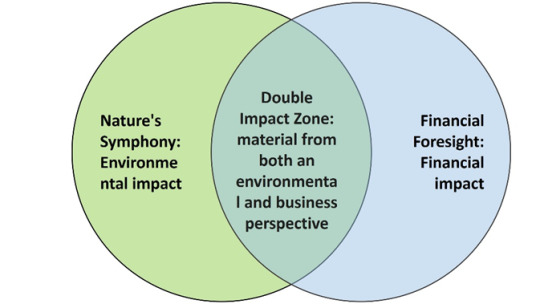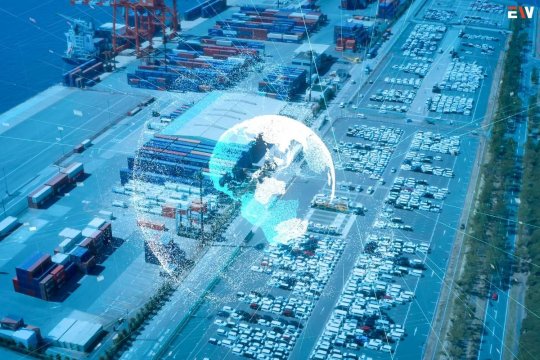#futureproofing
Text
Amazon Alexa is a graduate of the Darth Vader MBA

Next Tuesday (Oct 31) at 10hPT, the Internet Archive is livestreaming my presentation on my recent book, The Internet Con.

If you own an Alexa, you might enjoy its integration with IFTTT, an easy scripting environment that lets you create your own little voice-controlled apps, like "start my Roomba" or "close the garage door." If so, tough shit, Amazon just nuked IFTTT for Alexa:
https://www.theverge.com/2023/10/25/23931463/ifttt-amazon-alexa-applets-ending-support-integration-automation
Amazon can do this because the Alexa's operating system sits behind a cryptographic lock, and any tool that bypasses that lock is a felony under Section 1201 of the DMCA, punishable by a 5-year prison sentence and a $500,000 fine. That means that it's literally a crime to provide a rival OS that lets users retain functionality that Amazon no longer supports.
This is the proverbial gun on the mantelpiece, a moral hazard and invitation to mischief that tempts Amazon executives to run a bait-and-switch con where they sell you a gadget with five features and then remotely kill-switch two of them. This is prime directive of the Darth Vader MBA: "I am altering the deal. Pray I don't alter it any further."
So many companies got their business-plan at the Darth Vader MBA. The ability to revoke features after the fact means that companies can fuck around, but never find out. Apple sold millions of tracks via iTunes with the promise of letting you stream them to any other device you owned. After a couple years of this, the company caught some heat from the record labels, so they just pushed an update that killed the feature:
https://memex.craphound.com/2004/10/30/apple-to-ipod-owners-eat-shit-and-die-updated/
That gun on the mantelpiece went off all the way back in 2004 and it turns out it was a starter-pistol. Pretty soon, everyone was getting in on the act. If you find an alert on your printer screen demanding that you install a "security update" there's a damned good chance that the "update" is designed to block you from using third-party ink cartridges in a printer that you (sorta) own:
https://www.eff.org/deeplinks/2020/11/ink-stained-wretches-battle-soul-digital-freedom-taking-place-inside-your-printer
Selling your Tesla? Have fun being poor. The upgrades you spent thousands of dollars on go up in a puff of smoke the minute you trade the car into the dealer, annihilating the resale value of your car at the speed of light:
https://pluralistic.net/2022/10/23/how-to-fix-cars-by-breaking-felony-contempt-of-business-model/
Telsa has to detect the ownership transfer first. But once a product is sufficiently cloud-based, they can destroy your property from a distance without any warning or intervention on your part. That's what Adobe did last year, when it literally stole the colors from your Photoshop files, in history's SaaSiest heist caper:
https://pluralistic.net/2022/10/28/fade-to-black/#trust-the-process
And yet, when we hear about remote killswitches in the news, it's most often as part of a PR blitz for their virtues. Russia's invasion of Ukraine kicked off a new genre of these PR pieces, celebrating the fact that a John Deere dealership was able to remotely brick looted tractors that had been removed to Chechnya:
https://pluralistic.net/2022/05/08/about-those-kill-switched-ukrainian-tractors/
Today, Deere's PR minions are pitching search-and-replace versions of this story about Israeli tractors that Hamas is said to have looted, which were also remotely bricked.
But the main use of this remote killswitch isn't confounding war-looters: it's preventing farmers from fixing their own tractors without paying rent to John Deere. An even bigger omission from this narrative is the fact that John Deere is objectively Very Bad At Security, which means that the world's fleet of critical agricultural equipment is one breach away from being rendered permanently inert:
https://pluralistic.net/2021/04/23/reputation-laundry/#deere-john
There are plenty of good and honorable people working at big companies, from Adobe to Apple to Deere to Tesla to Amazon. But those people have to convince their colleagues that they should do the right thing. Those debates weigh the expected gains from scammy, immoral behavior against the expected costs.
Without DMCA 1201, Amazon would have to worry that their decision to revoke IFTTT functionality would motivate customers to seek out alternative software for their Alexas. This is a big deal: once a customer learns how to de-Amazon their Alexa, Amazon might never recapture that customer. Such a switch wouldn't have to come from a scrappy startup or a hacker's DIY solution, either. Take away DMCA 1201 and Walmart could step up, offering an alternative Alexa software stack that let you switch your purchases away from Amazon.
Money talks, bullshit walks. In any boardroom argument about whether to shift value away from customers to the company, a credible argument about how the company will suffer a net loss as a result has a better chance of prevailing than an argument that's just about the ethics of such a course of action:
https://pluralistic.net/2023/07/28/microincentives-and-enshittification/
Inevitably, these killswitches are pitched as a paternalistic tool for protecting customers. An HP rep once told me that they push deceptive security updates to brick third-party ink cartridges so that printer owners aren't tricked into printing out cherished family photos with ink that fades over time. Apple insists that its ability to push iOS updates that revoke functionality is about keeping mobile users safe – not monopolizing repair:
https://pluralistic.net/2023/09/22/vin-locking/#thought-differently
John Deere's killswitches protect you from looters. Adobe's killswitches let them add valuable functionality to their products. Tesla? Well, Tesla at least is refreshingly honest: "We have a killswitch because fuck you, that's why."
These excuses ring hollow because they conspicuously omit the possibility that you could have the benefits without the harms. Like, your tractor could come with a killswitch that you could bypass, meaning you could brick it at a distance, and still fix it yourself. Same with your phone. Software updates that take away functionality you want can be mitigated with the ability to roll back those updates – and by giving users the ability to apply part of a patch, but not the whole patch.
Cloud computing and software as a service are a choice. "Local first" computing is possible, and desirable:
https://pluralistic.net/2023/08/03/there-is-no-cloud/#only-other-peoples-computers
The cheapest rhetorical trick of the tech sector is the "indivisibility gambit" – the idea that these prix-fixe menus could never be served a la carte. Wanna talk to your friends online? Sorry there's just no way to help you do that without spying on you:
https://pluralistic.net/2022/11/08/divisibility/#technognosticism
One important argument over smart-speakers was poisoned by this false dichotomy: the debate about accessibility and IoT gadgets. Every IoT privacy or revocation scandal would provoke blanket statements from technically savvy people like, "No one should ever use one of these." The replies would then swiftly follow: "That's an ableist statement: I rely on my automation because I have a disability and I would otherwise be reliant on a caregiver or have to go without."
But the excluded middle here is: "No one should use one of these because they are killswitched. This is especially bad when a smart speaker is an assistive technology, because those applications are too important to leave up to the whims of giant companies that might brick them or revoke their features due to their own commercial imperatives, callousness, or financial straits."
Like the problem with the "bionic eyes" that Second Sight bricked wasn't that they helped visually impaired people see – it was that they couldn't be operated without the company's ongoing support and consent:
https://spectrum.ieee.org/bionic-eye-obsolete
It's perfectly possible to imagine a bionic eye whose software can be maintained by third parties, whose parts and schematics are widely available. The challenge of making this assistive technology fail gracefully isn't technical – it's commercial.
We're meant to believe that no bionic eye company could survive unless they devise their assistive technology such that it fails catastrophically if the business goes under. But it turns out that a bionic eye company can't survive even if they are allowed to do this.
Even if you believe Milton Friedman's Big Lie that a company is legally obligated to "maximize shareholder value," not even Friedman says that you are legally obligated to maximize companies' shareholder value. The fact that a company can make more money by defrauding you by revoking or bricking the things you buy from them doesn't oblige you to stand up for their right to do this.
Indeed, all of this conduct is arguably illegal, under Section 5 of the FTC Act, which prohibits "unfair and deceptive business practices":
https://pluralistic.net/2023/01/10/the-courage-to-govern/#whos-in-charge
"No one should ever use a smart speaker" lacks nuance. "Anyone who uses a smart speaker should be insulated from unilateral revocations by the manufacturer, both through legal restrictions that bind the manufacturer, and legal rights that empower others to modify our devices to help us," is a much better formulation.
It's only in the land of the Darth Vader MBA that the deal is "take it or leave it." In a good world, we should be able to take the parts that work, and throw away the parts that don't.
(Image: Stock Catalog/https://www.quotecatalog.com, Sam Howzit; CC BY 2.0; modified)

If you'd like an essay-formatted version of this post to read or share, here's a link to it on pluralistic.net, my surveillance-free, ad-free, tracker-free blog:
https://pluralistic.net/2023/10/26/hit-with-a-brick/#graceful-failure
#pluralistic#alexa#ifttt#criptech#disability#drm#revocation#nothing about us without us#futureproofing#graceful failure#darth vader MBA#enshittification
286 notes
·
View notes
Text
A ceramic lagging sheet with a chloroprene bonding layer is employed as a protective covering to enhance and prolong pulley life in applications in harsh circumstances in muddy and damp places. High-quality ceramic lagging with a chloroprene adhesive layer for rapid and simple installation has been created by Oliver Rubber Industries LLP.

#manufacturer#advancedmaterials#industrialinnovation#industry#manufacturing#futureproofing#efficiency
0 notes
Text
⚡➡️ 𝗙𝗿𝗼𝗺 𝗙𝗹𝗮𝘀𝗵 𝘁𝗼 𝗛𝗧𝗠𝗟𝟱: 𝗘𝘀𝘀𝗲𝗻𝘁𝗶𝗮𝗹 𝗔𝗻𝘀𝘄𝗲𝗿𝘀 𝘁𝗼 𝗬𝗼𝘂𝗿 𝗤𝘂𝗲𝘀𝘁𝗶𝗼𝗻𝘀 ❓📝
🌐 Discover the seamless shift from Flash to HTML5! 🎯 Unlock enhanced user experiences, improved performance, and future-proof your web presence. Dive into our guide answering your top 5 conversion questions. Let's embark on this journey together, transforming your online experience! 💻
🔗 𝙍𝙚𝙖𝙙 𝙩𝙝𝙚 𝙛𝙪𝙡𝙡 𝙖𝙧𝙩𝙞𝙘𝙡𝙚 𝙪𝙨𝙞𝙣𝙜 𝙩𝙝𝙚 𝙗𝙚𝙡𝙤𝙬 𝙡𝙞𝙣𝙠! https://www.swiftelearningservices.com/flash-to-html5/
👉 𝙑𝙞𝙨𝙞𝙩 𝙤𝙪𝙧 𝙬𝙚𝙗𝙨𝙞𝙩𝙚 𝙛𝙤𝙧 𝙢𝙤𝙧𝙚 𝙞𝙣𝙨𝙞𝙜𝙝𝙩𝙨: https://www.swiftelearningservices.com/
0 notes
Text
Web Summit Qatar was amazing!
Had a blast meeting other startup founders, sharing ideas, and getting valuable feedback. It was like a fireside chat for founders, filled with learning and support.
Made tons of connections across different industries, shared knowledge with younger founders, passing on the torch a bit. It's awesome to give back and help others.
This is just the beginning for LMS Monks. We're aiming to be a household name, maybe even in outer space!
And to everyone we met, we'll be in touch!
Email Us :- [email protected]
#elearning#education#educators#edtech#lmsmonks#online learning#development#onlinetraining#elearning platform#elearning solution#websummitqatar#websummit#startup#futureproofing#LMSMonks
0 notes
Text
Mastering Material Data Management: A Cornerstone for Sustainable Decision-Making in Green Finance
In today's world, sustainability isn't just a buzzword - it's a driving force for businesses and investors alike. And at the heart of it all lies ESG data. This critical information paints a picture of a company's environmental, social, and governance performance, but gathering it can be a real challenge.
Imagine sifting through mountains of spreadsheets, deciphering cryptic reports, and chasing down data scattered across departments. It's enough to give even the most sustainability-minded individual a headache.
That's where Master Data Management (MDM) steps in, playing a crucial role in ensuring accurate, reliable, and consistent ESG reporting.
Understanding ESG Data:
At the heart of sustainable finance lies ESG data, providing information about a company or investment's environmental, social, and governance (ESG) attributes. This data is used by a wide range of stakeholders, including investors, analysts, companies, policymakers, and more, to understand and make informed decisions about business effectiveness, risk, and sustainability.
Sustainable data management is the responsible management and handling of data throughout its lifecycle. This includes the collection, processing, storage, and disposal of data. Sustainable data management aims to minimize the environmental impact of data management practices, reduce energy consumption, and optimize the use of resources. Sustainable data management also focuses on ensuring that data is used in a socially responsible and ethical way.
Why is Sustainable Data Management Important?
Sustainable data management is essential for several reasons. Firstly, it helps to minimize the environmental impact of data management practices. Data centres and other IT infrastructure consume significant amounts of energy and produce a considerable amount of carbon emissions. Sustainable data management practices aim to reduce energy consumption and carbon emissions by optimizing data centre design, improving energy efficiency, and using renewable energy sources.
88% of publicly traded companies have ESG initiatives in place followed by 79% of venture and private equity-backed companies and 67% of privately-owned companies. (Src:Navex)
Data Collection for ESG Reporting
ESG reporting demands transparency on a company's environmental, social, and governance practices. The first step is choosing the relevant metrics based on your industry, reporting framework (e.g., GRI, SASB, TCFD), and stakeholder interests.
Each framework defines specific metrics for different ESG categories like:
Environment: Greenhouse gas emissions, water usage, waste generation, resource consumption, etc.
Social: Labor practices, diversity and inclusion, employee health and safety, community engagement, etc.
Governance: Board composition, executive compensation, shareholder rights, anti-corruption practices, etc.
Gathering the data to tell this story is crucial, but it can be a complex process. Once the metrics are identified, you need to gather data from various sources:
Internal Data: This includes energy consumption, waste generation, employee diversity, community engagement, and governance policies. Data may reside in various systems like energy meters, HR databases, and financial records, etc.
External Data: Suppliers, industry groups, and governmental agencies provide data on things like raw material sourcing, labor practices, and regulatory compliance, etc.
Prioritizing your Data Collection with Double Materiality
Before diving into data mountains, it's crucial to define your Everest. Enter double materiality, the guiding compass for prioritizing the most impactful ESG and sustainability data your organization needs to collect.
Double materiality emphasizes matters that are significant:
From an ESG perspective: How your operations and actions affect the environment, society, and governance.
From a financial perspective: How ESG issues can impact your business risks and opportunities.
Think of it like Venn diagram of "sustainability is good for the planet" and "sustainability is good for business." The overlapping area forms your double materiality sweet spot, focusing data collection efforts on topics that matter most, both ethically and economically.

Practically, focus your data collection laser! By identifying the most critical ESG topics and risks, you ensure your efforts aren't scattered. Take for example the rising threat of extreme weather events for an energy and utility company – a double materiality double whammy for both sustainability and the bottom line! Now, let's turn the screws: what are the key climate risk data points and KPIs this company needs to track? Where's this data hiding, internally or externally? And how can they grab it efficiently? Prioritization isn't just about sorting – it's about taking targeted action for maximum impact.
The Challenges of Data Cleansing and Management:
Gathering the valuable information isn't always a picnic. Here are some common hurdles:
Data Silos: ESG data often gets trapped in isolated pockets across different departments and systems.
Inconsistent Formats: Metrics may be measured and reported differently, making comparisons difficult.
Data Quality Issues: Missing or inaccurate data can undermine the entire reporting process.
Lack of Resources: Companies may struggle to dedicate time and expertise to data collection.
Inaccurate or missing data can undermine the credibility of your ESG report. MMDM solution providers like Verdantis offers data cleansing, validation, and enrichment tools, enhancing data quality and minimizing errors.
Your ESG materiality should be a mirror reflecting your unique identity, values, and business model. Sustainability and ESG initiatives should build upon this foundation, not replace it.
By prioritizing data management, you ensure your focus remains on the issues that truly matter, driving both environmental progress and financial success.
MDM: The Powerhouse for ESG Data:
As ESG reporting requires accurate and comprehensive data across multiple dimensions, MDM provides the necessary framework to ensure data integrity and consistency.
MDM (Master Data Management) provides the foundation for effective management of ESG data, offering several key benefits:
Single Source of Truth: MDM establishes a single, centralized repository for all ESG data, eliminating inconsistencies and streamlining access for various stakeholders.
Data Quality and Integrity: MDM ensures data accuracy, completeness, and consistency, mitigating risks associated with poor data quality.
Improved Reporting and Compliance: By centralizing and standardizing ESG data, MDM facilitates efficient reporting and compliance with evolving ESG regulations.
Enhanced Decision-Making: Accurate and reliable ESG data empowers companies to make informed decisions about sustainable investments, operations, and stakeholder engagement.
Planting the Seeds for a Sustainable Future:
In our data-driven future, sustainable finance practices are no longer optional but imperative. Robust Master Data Management (MDM) solutions like Verdantis unlock the full potential of ESG data, fostering informed decision-making and transparency. Empower your organization in sustainable finance with MDM, navigating the complex financial landscape one well-governed data point at a time.
Mastering material data management is not just a business necessity but a strategic advantage in our evolving world. Prioritizing accurate material data helps companies navigate green finance, meet ESG standards, and reduce carbon footprints. Integrating sustainability into core decision-making processes contributes to a more resilient and environmentally conscious global economy.
To embark on a data led ESG strategy, organizations require internal support and guidance from consulting partners like Verdantis to craft a blueprint. Considering the vast amount of data involved, the right technology becomes essential.
Remember, MDM is not just about managing data, it's about managing your organization's journey towards a sustainable and responsible future.
Get In Touch Today To Embrace A Sustainable Future: [email protected]/
www.verdantis.com/contact
#ESG#Sustainability#SustainableFinance#GreenFinance#ImpactInvesting#ClimateAction#CorporateSocialResponsibility#CSR#DataDrivenDecisions#FutureProofing#MasterDataManagement#MaterialDataManagement#DataGovernance#GreenInvesting#SustainableInvesting#ESGInvesting#FinTech#ClimateTech#CleanTech#CircularEconomy#Datacleansing
0 notes
Text
The Ultimate Guide: Future-Proofing Your Website with 2024 Maintenance Trends
0 notes
Text
Navigating Tomorrow: The Role of Web Development in Future-Proofing Your Business
Discover the keys to business longevity in the digital age. Explore the transformative impact of strategic web development on future-proofing your business. Uncover insights, trends, and actionable strategies to navigate tomorrow's challenges with confidence and stay ahead in the ever-evolving landscape of the online world.
0 notes
Text
What is the Role of a Cloud Computing Engineer in the Tech-dominated Infrastructure?

A cloud computing engineer has become an important part of the corporate world lately. In a tech-driven world, the infrastructure that underpins our digital existence has become increasingly reliant on cloud computing. Within this dynamic landscape, the role of a cloud computing engineer emerges as a linchpin in the seamless functioning of organizations’ IT systems.
This article embarks on a journey to unravel the multifaceted role of a cloud computing engineer and to underscore why organizations should consider this role essential. Furthermore, we’ll explore the future of cloud computing within the IT industry, offering a glimpse into what lies ahead. As we traverse a digital realm where data and applications are no longer confined to on-premises servers but dispersed across vast virtual landscapes, these engineers are the architects, guardians, troubleshooters, and efficiency orchestrators, ensuring the seamless operation of IT systems.
Let’s dive deep to read more on What is the Role of a Cloud Computing Engineer in the Tech-dominated Infrastructure?
The Crucial Role of a Cloud Computing Engineer
Architect of the Digital Ecosystem

A cloud computing engineer is the architect of the digital ecosystem, responsible for designing, deploying, and managing cloud-based infrastructure. They must have a deep understanding of various cloud services and platforms, ensuring that the organization’s digital assets are hosted, maintained, and scaled optimally.
Security Sentinel
Security is a paramount concern in the cloud. A cloud computing engineer is tasked with implementing robust security measures, including encryption, identity and access management, and compliance controls. They are the guardians of data integrity and privacy.
Troubleshooter Extraordinaire
When issues arise in the cloud environment, the engineer dons their troubleshooter hat. They must diagnose problems, optimize performance, and ensure minimal downtime. Rapid response and problem resolution are crucial in maintaining a seamless digital operation.
Efficiency Orchestrator
Cloud computing engineers orchestrate resources effectively, optimizing cost management. They must balance performance with cost, ensuring that the organization gets the most value from its cloud investments.
Why Organizations Should Consider the Role of a Cloud Computing Engineer
Navigating Complex Cloud Ecosystems

The cloud ecosystem is intricate, with a multitude of services, providers, and configurations. Organizations need a knowledgeable guide to navigate this complexity and ensure they are utilizing the cloud to its full potential.
Security and Compliance Assurance
Data breaches and compliance violations can be devastating. A cloud computing engineer is instrumental in safeguarding sensitive information and ensuring that the organization adheres to regulatory requirements.
Maximizing Efficiency
In an era where efficiency is paramount, engineers help organizations maximize resource utilization, reduce costs, and maintain a competitive edge in the digital landscape.
Future-Proofing Digital Infrastructure
Cloud computing is continuously evolving. A cloud computing engineer keeps an organization’s digital infrastructure future-proof, adapting to new technologies and ensuring that the organization remains agile in the face of change.
The Future of Cloud Computing in the IT Industry
Hybrid and Multi-Cloud Environments
The future of cloud computing lies in hybrid and multi-cloud environments. Organizations will blend private and public clouds, optimizing their infrastructure for specific workloads. Cloud computing engineers will play a pivotal role in orchestrating and managing these complex environments.
Edge Computing Integration
Edge computing is gaining prominence, especially in applications that demand low latency. Cloud computing engineers will extend their expertise to manage edge computing nodes, ensuring a seamless connection between the edge and the cloud.
Enhanced Security and Compliance
As cyber threats evolve, security and compliance will remain at the forefront of cloud computing. Engineers will need to continually adapt and implement cutting-edge security measures to protect digital assets.
Serverless and Container Technologies

Serverless and container technologies are reshaping the cloud landscape. They will need to master these technologies, optimizing resource utilization and ensuring scalability.
Artificial Intelligence and Machine Learning Integration
AI and machine learning are revolutionizing cloud services. Engineers will harness these technologies to automate tasks, gain insights, and enhance cloud performance.
Conclusion
The role of a cloud computing engineer in our tech-dominated infrastructure cannot be overstated. They are the architects of our digital landscape, the sentinels of security, and the orchestrators of efficiency. Organizations that recognize the value of a cloud computing engineer invest in the resilience and future-proofing of their digital infrastructure. As we peer into the future, cloud computing continues to evolve, with hybrid and multi-cloud environments, edge computing, enhanced security, serverless technologies, and AI integration at the forefront.
The cloud computing engineer, equipped with the knowledge and skills to navigate this evolving landscape, will play a pivotal role in shaping the digital future of organizations. The future of cloud computing within the IT industry is dynamic and promising, and the cloud computing engineer is the vanguard that will lead organizations through this transformative journey.
Also Read: Selling or Buying a Business with a Focus on Hybrid Security
#CloudComputing#TechInfrastructure#ITSystems#DigitalEcosystem#SecurityEngineer#HybridCloud#EfficiencyOptimization#FutureProofing
0 notes
Text
Future-Proofing Businesses: Embracing AI and Cloud Migration in Apptware’s Industry.
#AIforBusiness#CloudMigration#FutureProofing#DigitalTransformation#AIandCloud#TechTrends#BusinessStrategy#AIIntegration#CloudTechnology#SmartBusiness#DataAnalytics#AIInnovation#TechSolutions#BusinessResilience#DigitalEvolution#CloudAdoption#Apptware
0 notes
Text
Guide to future proofing your practice | Embracing technology
youtube
In this video, we'll explore a comprehensive guide to future-proofing your practice by embracing technology. Discover the strategies and tools to stay ahead in an ever-evolving landscape.
#FutureProofing#EmbracingTechnology#BusinessStrategy#TechIntegration#InnovationInPractice#DigitalTransformation#StayAhead#AdaptOrPerish#TechSavvyPros#SuccessInTech#BusinessEvolution#Youtube
0 notes
Text

Ensuring a future-ready and resilient tech ecosystem. 🌟 Stay with us as we journey toward a seamless digital tomorrow!
visit us at - www.syngrowconsulting.com
Email us at - [email protected]
Call us at - +1 (917) 764 5482
#Infrastructure Migration#Digital Transformation#Tech Upgrade#Cloud Migration#Data Center Migration#Legacy Systems#Scalability#Reliability#Efficiency#Innovation#Modernization#Resilience#Agility#Tech Evolution#FutureProofing#Digital#infrastructure#IT Transformation#Network Migration#Data Migration#IT Infrastructure
1 note
·
View note
Text
Checkered or Checkered Rubber Sheets manufactured by Oliver Rubber Industries LLP are extremely high in quality. We design the sheets while keeping in mind the comfort of the consumer. The rubber material used is super-soft, and the design is professionally made to provide an anti-slipping finish. A checkered rubber sheet is primarily used for industrial purposes as it gives a beautiful flooring finish.

0 notes
Text
How to start having Tantric sex (tips for beginners)
youtube
#dryfast#mindovermatter#embracethechallenge#financialliteracy#education#youngadults#futureproofing#moneymanagement#breakingthefast#selfdiscipline#mindfulness#potential#breatharianism#breatharian#awakening#vegetarian#RaisingVibration#intermittentfasting#weightloss#keto#motivation#believeinyourself#Youtube
1 note
·
View note
Photo

Custom PC vs. Pre-Built: Which is Right for You? Should you buy a pre-built computer or build your own custom PC? We'll explore the pros and cons of each option and help you decide which is right for you.
0 notes
Text
Looking for a reliable and high-speed internet connection? Look no further than optical fiber technology! At OWCable , offers a comprehensive range of optical fiber products that are designed to revolutionize the way you communicate and access information.
#OpticalFiberBenefits#ModernCommunications#HighSpeedInternet#FiberOpticTechnology#DataTransmission#ReliableConnectivity#LowLatency#BandwidthCapacity#SecureNetworks#FutureProofing#OWCable
0 notes
Text
do you actually give a damn about transfems. do you care about us. our interests, even the ones that arent stereotypically applied to us? do you care about the unpalatable? the uninteresting? the masculine? even the ones you hate and abhor? do you think our suffering is unjust? would you listen to us? do you think we deserve love? would you listen to me? please listen to us. please.
[THIS POST IS SPECIFICALLY ABOUT TRANS WOMEN/TRANSFEMS PLEASE DONT DERAIL]
984 notes
·
View notes